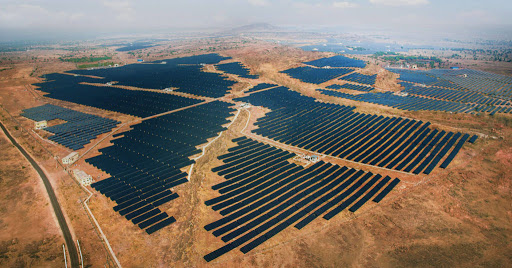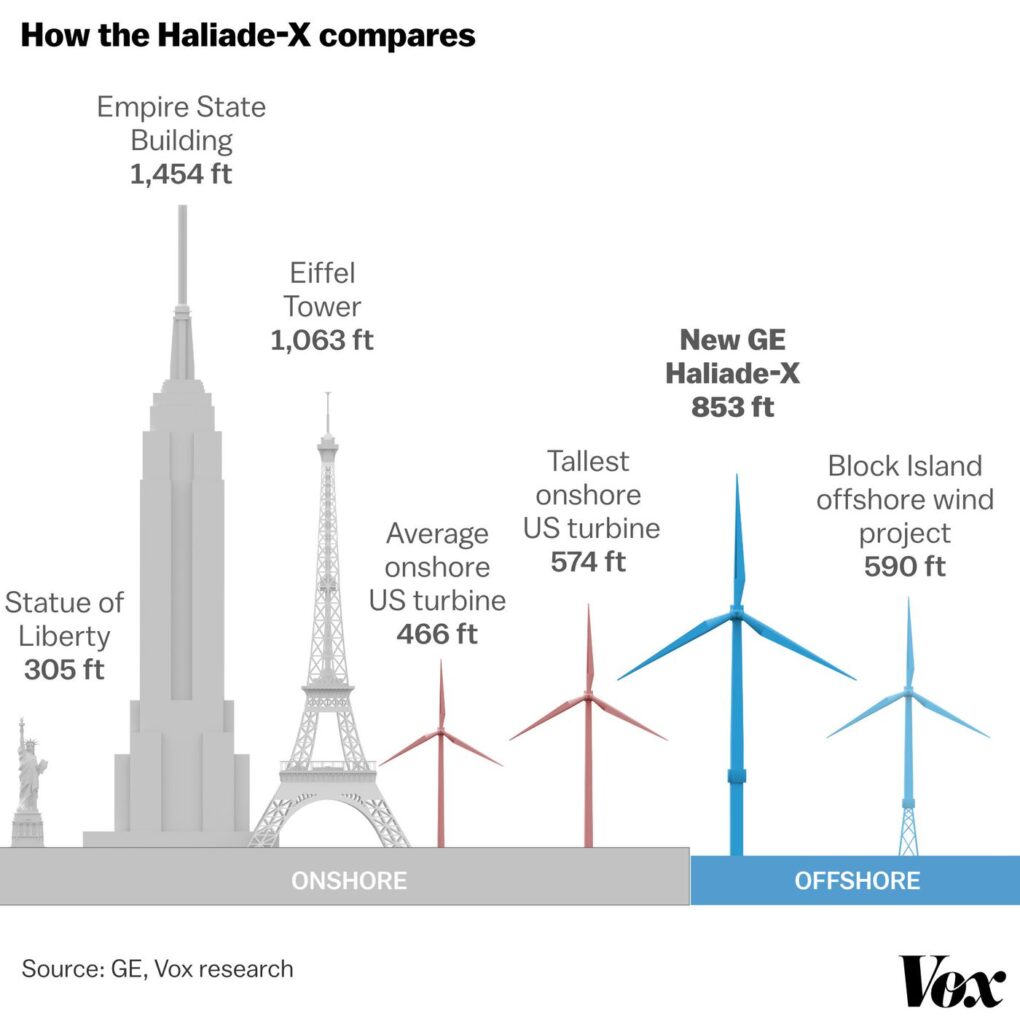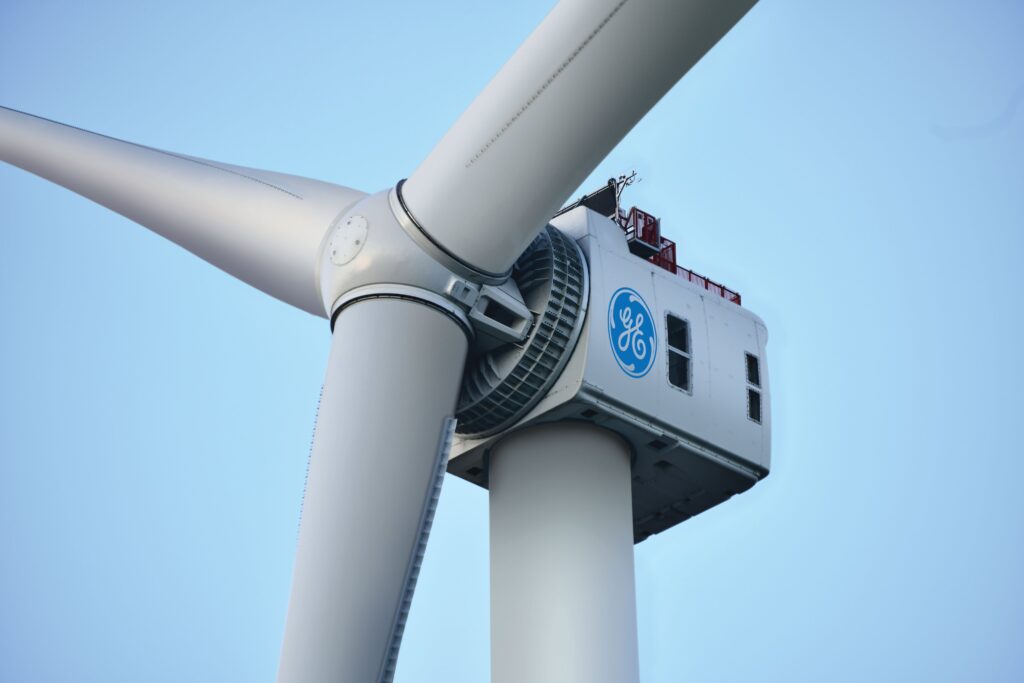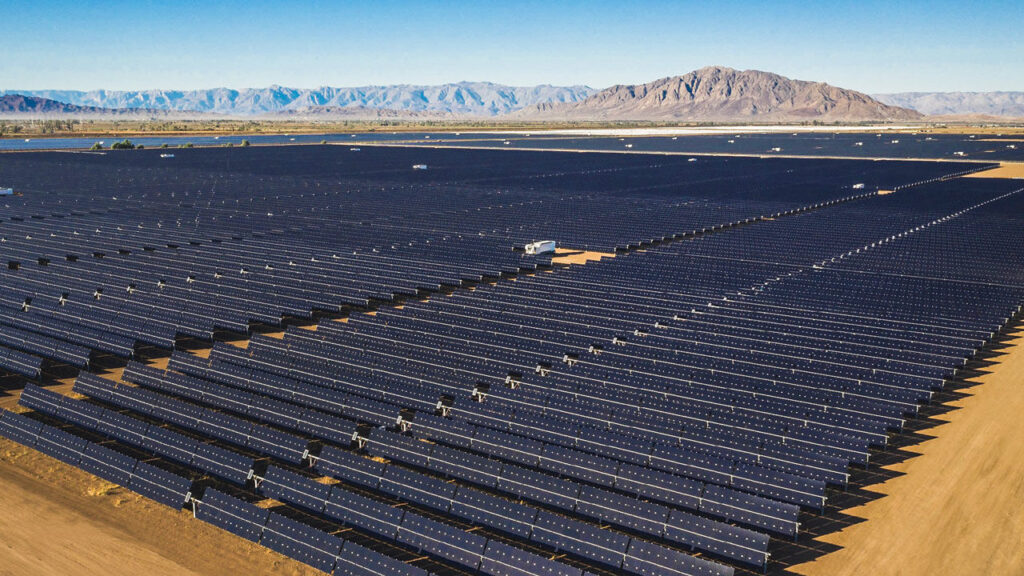
Wind & Solar Achieve Scale Differently
In Matt Ridley’s book, he talks about how larger infrastructure projects have a higher likelihood to get bogged down with excess costs. The costs begin in permitting and ultimately show up in another, comparative form: Smaller form assets allow for greater iteration during development and more adjustments while in operation- continuously lowering costs. This tweaking is innovation at its’ finest.
Both wind energy and solar energy have declined down the cost curve dramatically over the past decade. And they have gone about that cost decline in different ways.
Wind blades are bigger. Blades and a turbine unit are ENORMOUS. Check out the graphic below. It is easy to forget now, but there was a time when energy professionals thought that small-scale, rooftop or backyard turbines could also be a viable solution. Wind has achieved cost declines by scaling a turbine and new materials and systems innovations. The latest GE Haliade-X is the size of a skyscraper and can power thousands of homes.
And solar (images after the wind turbines) has achieved scale by focusing on improvements to the panel (bifacial) tracker (sun-tracking, pneumatic) and systems (inverter technology) to make very rapid iterations in an array’s output. In solar, the unit remains small and the scale has grown in farm footprint, with sites now spanning 1,000s of acres.
Both energy forms will have a place in our energy transition. It’s fascinating how the two technologies are advancing and a reminder how hard it is to predict what happens next.




